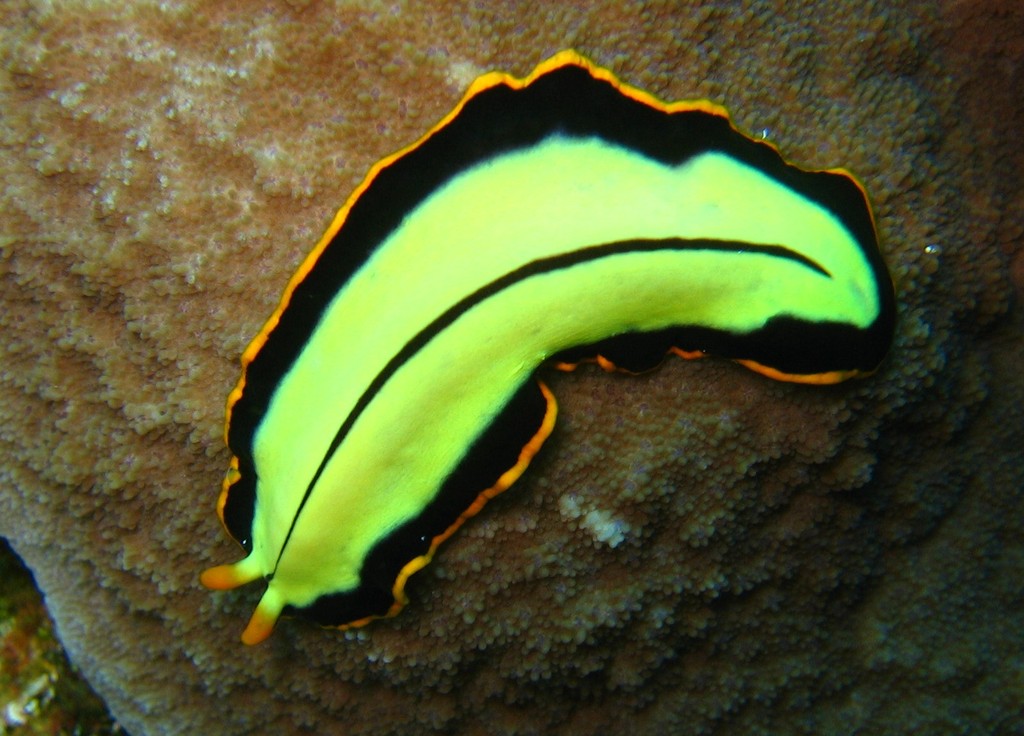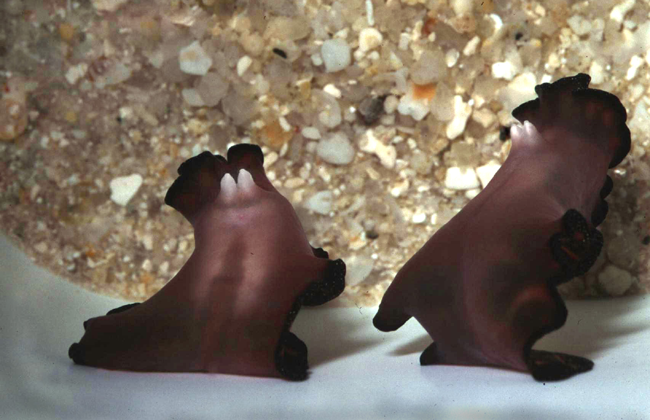|
Rhabditophora
Rhabditophora (from ''rhabdito''-, rhabdite + Greek -φορος ''phoros'' bearer, i.e., "rhabdite bearers") is a class of flatworms. It includes all parasitic flatworms (clade Neodermata) and most free-living species that were previously grouped in the now obsolete class Turbellaria. Therefore, it contains the majority of the species in the phylum Platyhelminthes, excluding only the catenulids, to which they appear to be the sister group. The clade Rhabditophora was originally erected by Ulrich Ehlers in 1985Ehlers, U. (1985) ''Phylogenetic relationships within the Platyhelminthes''. ''In'' S. Conway Morris; J. D. George; R. Gibson; H. M. Platt (Eds.), ''The origins and relationships of lower invertebrates''. Oxford, Clarendon Press, p. 143-158. based on morphological analyses and its monophyly was later confirmed by molecular studies. Description Rhabditophorans are characterized by the presence of lamellated rhabdites, rodlike granules secreted in the cells of the epidermis ... [...More Info...] [...Related Items...] OR: [Wikipedia] [Google] [Baidu] |
Platyhelminthes
The flatworms, flat worms, Platyhelminthes, or platyhelminths (from the Greek language, Greek πλατύ, ''platy'', meaning "flat" and ἕλμινς (root: ἑλμινθ-), ''helminth-'', meaning "worm") are a Phylum (biology), phylum of relatively simple bilaterian, Segmentation (biology), unsegmented, soft-bodied invertebrates. Unlike other bilaterians, they are acoelomates (having no coelom, body cavity), and have no specialized circulatory system, circulatory and respiratory system, respiratory organ (anatomy), organs, which restricts them to having flattened shapes that allow oxygen and nutrients to pass through their bodies by diffusion. The digestive cavity has only one opening for both ingestion (intake of nutrients) and egestion (removal of undigested wastes); as a result, the food cannot be processed continuously. In traditional medicinal texts, Platyhelminthes are divided into Turbellaria, which are mostly non-parasitic animals such as planarians, and three entirely p ... [...More Info...] [...Related Items...] OR: [Wikipedia] [Google] [Baidu] |
Flatworms
The flatworms, flat worms, Platyhelminthes, or platyhelminths (from the Greek πλατύ, ''platy'', meaning "flat" and ἕλμινς (root: ἑλμινθ-), ''helminth-'', meaning "worm") are a phylum of relatively simple bilaterian, unsegmented, soft-bodied invertebrates. Unlike other bilaterians, they are acoelomates (having no body cavity), and have no specialized circulatory and respiratory organs, which restricts them to having flattened shapes that allow oxygen and nutrients to pass through their bodies by diffusion. The digestive cavity has only one opening for both ingestion (intake of nutrients) and egestion (removal of undigested wastes); as a result, the food cannot be processed continuously. In traditional medicinal texts, Platyhelminthes are divided into Turbellaria, which are mostly non-parasitic animals such as planarians, and three entirely parasitic groups: Cestoda, Trematoda and Monogenea; however, since the turbellarians have since been proven not to be mono ... [...More Info...] [...Related Items...] OR: [Wikipedia] [Google] [Baidu] |
Proseriata
Proseriata is an order of free-living flatworms in the class Rhabditophora with over 400 species described worldwide. Description Proseriate flatworms are minute aquatic organisms, usually with an elongate body. There are no strong synapomorphies for the group, but it is supported by molecular studies. The suggested synapomorphies include the lack of lamellated rhabdites, an otherwise synapomorphy of Rhabditophora, and some features of the ultrastructure of the protonephridia and the cilia of epidermal cells. Ecology Most proseriates occur in marine environments, at the coastal zones, and are particularly common in high-energy habitats with medium to coarse sediments, sometimes being the dominant animal group in such areas. They are also common in brackish water, but few species occur in freshwater. Most proseriates are carnivores or scavengers, but some species are ectoparasitic on marine crustaceans. As they occur in very high densities in some habitats, they may have a co ... [...More Info...] [...Related Items...] OR: [Wikipedia] [Google] [Baidu] |
Myozona
Macrostomorpha is a clade of free living flatworms ranked either as class or subclass in the group Rhabditophora. There are about 260 described species in two orders - marine, freshwater and brackish Macrostomida, which group most of the species diversity, and exclusively marine Haplopharyngida ''Haplopharynx'' is a genus of small, free living marine flatworms found in the North Atlantic and the Mediterranean. It is the only genus in the monotypic family Haplopharyngidae. Species The following species are recognized in the genus ''Hap ... with only three described species. Macrostomorpha constitute a basal group in Rhabditophora, showing such plesiomorphic condition as entolecithal eggs and spiral cleavage. Another trait found among members of the clade is presence of hard stylet in the male copulatory organ. References Turbellaria Rhabditophora {{flatworm-stub ... [...More Info...] [...Related Items...] OR: [Wikipedia] [Google] [Baidu] |
Bradynectes
Macrostomorpha is a clade of free living flatworms ranked either as class or subclass in the group Rhabditophora. There are about 260 described species in two orders - marine, freshwater and brackish Macrostomida, which group most of the species diversity, and exclusively marine Haplopharyngida ''Haplopharynx'' is a genus of small, free living marine flatworms found in the North Atlantic and the Mediterranean. It is the only genus in the monotypic family Haplopharyngidae. Species The following species are recognized in the genus ''Hap ... with only three described species. Macrostomorpha constitute a basal group in Rhabditophora, showing such plesiomorphic condition as entolecithal eggs and spiral cleavage. Another trait found among members of the clade is presence of hard stylet in the male copulatory organ. References Turbellaria Rhabditophora {{flatworm-stub ... [...More Info...] [...Related Items...] OR: [Wikipedia] [Google] [Baidu] |
Macrostomorpha
Macrostomorpha is a clade of free living flatworms ranked either as class or subclass in the group Rhabditophora. There are about 260 described species in two orders - marine, freshwater and brackish Macrostomida, which group most of the species diversity, and exclusively marine Haplopharyngida ''Haplopharynx'' is a genus of small, free living marine flatworms found in the North Atlantic and the Mediterranean. It is the only genus in the monotypic family Haplopharyngidae. Species The following species are recognized in the genus ''Hap ... with only three described species. Macrostomorpha constitute a basal group in Rhabditophora, showing such plesiomorphic condition as entolecithal eggs and spiral cleavage. Another trait found among members of the clade is presence of hard stylet in the male copulatory organ. References Turbellaria Rhabditophora {{flatworm-stub ... [...More Info...] [...Related Items...] OR: [Wikipedia] [Google] [Baidu] |
Rhabdocoela
Rhabdocoela is an order of flatworms in the class Rhabditophora with about 1700 species described worldwide. The order was first described in 1831 by Christian Gottfried Ehrenberg. Most of rhabdocoels are free-living organisms, but some live symbiotically with other animals. Description Although Rhabdocoela is a highly supported group in molecular studies, there is no clear morphological synapomorphy that unites them. All rhabdocoels have a bulbous pharynx, but this is shared with other flatworm groups, such as Neodermata, Lecithoepitheliata and some species of Prolecithophora. Some possibly identified synapomorphies are found in the ultrastructure of the protonephridial system, but similar constructions exist in other groups. Another possible apomorphy is found in the ultrastructure of the sperm, which has a dense heel on the basal bodies during spermiogenesis, but some groups have lost this feature. Classification Rhabdocoels were traditionally classified in two groups, ... [...More Info...] [...Related Items...] OR: [Wikipedia] [Google] [Baidu] |
Turbellaria
The Turbellaria are one of the traditional sub-divisions of the phylum Platyhelminthes (flatworms), and include all the sub-groups that are not exclusively parasitic. There are about 4,500 species, which range from to large freshwater forms more than long or terrestrial species like ''Bipalium kewense'' which can reach in length. All the larger forms are flat with ribbon-like or leaf-like shapes, since their lack of respiratory system, respiratory and circulatory system, circulatory systems means that they have to rely on diffusion for internal transport of metabolites. However, many of the smaller forms are round in cross section. Most are predators, and all live in water or in moist terrestrial environments. Most forms reproduce sexual reproduction, sexually and with few exceptions all are hermaphrodites, simultaneous hermaphrodites. The Acoelomorpha and the genus ''Xenoturbella'' were formerly included in the Turbellaria, but are no longer regarded as Platyhelminthes. All th ... [...More Info...] [...Related Items...] OR: [Wikipedia] [Google] [Baidu] |
Fecampiida
Fecampiida is an order of flatworms in the class Rhabditophora. It is a considerably recent clade, erected after molecular studies. Description The order Fecampiida, as currently defined, was erected based on molecular studies. They all are parasitic organisms and are united by a similar development of the basal bodies during spermiogenesis. Classification Three families of Fecampiida were initially classified in different flatworm orders: Urastomatidae and Genostomatidae were considered prolecithophorans, while Fecampiidae was considered a rhabdocoel. When the genus '' Notentera'' was discovered, its relationship with Fecampiidae was clear based on morphology, and both groups were united under Fecampiida. Further ultrastructural studies suggested that Urastomatidae and Genostomatidae were closely related to Fecampiidae and Notenteridae, which was confirmed by molecular studies. Due to similarities in the protonephridial flame bulb, sperm and spermiogenesis, as well as ... [...More Info...] [...Related Items...] OR: [Wikipedia] [Google] [Baidu] |
Bothrioplanida
''Bothrioplana'' is a genus of freshwater flatworms, the sole genus in the family Bothrioplanidae and order Bothrioplanida. Description Species of ''Bothrioplana'' are small organisms, usually measuring 2–3 mm in length, but reaching up to 7 mm. The body is transparent, elongate, with a round posterior end and a truncate front end, and lacks eyes. The mouth lies on the ventral side at about the middle of the body, as in most turbellarians, and has a short pharynx. The intestine is tripartite, similarly to what occurs in triclads, having one anterior and two posterior branches. The posterior branches unite behind the copulatory apparatus and form a single branch. The reproductive system has a pair of testes and a pair of ovaries, as well as a series of vitellaria (yolk-producing glands) that extend along the entire body. Many specimens have the male reproductive system highly reduced or even absent. As a result, parthenogenesis may occur. Ecology Individuals of ''Bothriopl ... [...More Info...] [...Related Items...] OR: [Wikipedia] [Google] [Baidu] |
Macrostomum Lignano
''Macrostomum lignano'' is a free-living, hermaphroditic flatworm. It is transparent and of small size (adults reaching about 1.7 mm), and is part of the intertidal sand meiofauna of the Adriatic Sea. Originally a model organism for research on developmental biology and the evolution of the bilaterian body plan, it has since expanded to other important fields of research such as sexual selection and sexual conflicts, ageing and the evolution of the bilaterian body plan, ecotoxicology, and, more recently, genomics. Name The genus name "''Macrostomum''", meaning "big-mouthed", derives from the Greek μάκρος ''makros'', "large", and στόμα, ''stoma'', mouth. The species name, ''lignano'', comes from the location where this species has so far been found, the sandy beaches and lagoons at and near Lignano Sabbiadoro, Italy. Biology ''Macrostomum lignano'', like all other flatworms, is an unsegmented, soft-bodied bilaterian without body cavity, and no specialized cir ... [...More Info...] [...Related Items...] OR: [Wikipedia] [Google] [Baidu] |
Neodermata
Neodermata is a clade of rhabditophoran flatworms containing the parasitic groups Trematoda, Monogenea and Cestoda. Description All neodermatans are parasites, in many groups having a free-swimming larval stage. The most striking feature uniting all neodermatans is that the ciliated epidermis (typical of most flatworms) is cast off in adult worms, being replaced by a syncytium called tegument or ''neodermis''. Other characters found in all neodermatans are related to the anatomy of the protonephridium and the rootlets of epidermal locomotory cilia. Phylogeny Currently, the monophyly of Neodermata is undisputed, being supported by both morphological and molecular data. It is clear that they evolved from free-living flatworms (turbellarians), but their sister-group was for a long time a matter of debate. The first attempts to reconstruct the phylogeny of flatworms, based on morphological evidence, considered Rhabdocoela to be the sister-group of Neodermata, but this was based ... [...More Info...] [...Related Items...] OR: [Wikipedia] [Google] [Baidu] |



